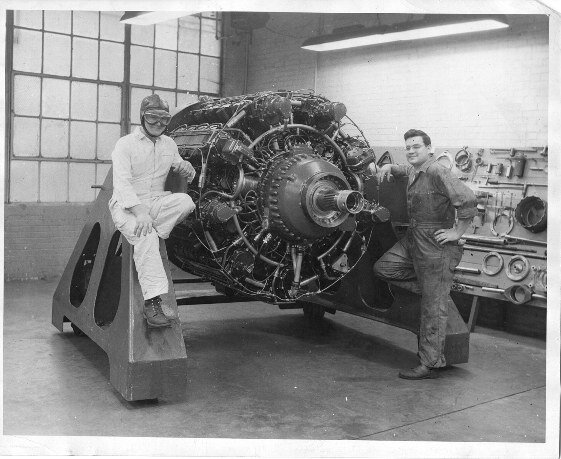
youngmic
Members-
Posts
125 -
Joined
-
Last visited
youngmic's Achievements

Well-known member (3/3)
-
It is with great sadness that I announce that a fellow member and a great mate Geoff Waddleton passed away yesterday. I guess we all have to go sometime but I really wished Geoff could have had a few more years as no doubt he was looking forward to a time soon when he could stop working so hard and put his feet up. But such is life. Geoff's life is one that carried the hallmark of uncomplaining hard work, selfless thought and a great sense of humour. You'll be deeply missed by many mate, RIP. (If someone can post up Geoff's profile pic it would be a nice touch)
-
Stopping at Runway Holding Position Markings
youngmic replied to Captain's topic in AUS/NZ General Discussion
Turboplanner, Given that the purpose of the AIP is to give guidance and aid in the interpretation of the CAR/CASR. I still feel that a crew should be able to support their action based on the AIP guidance and their professional justification for planning such an approach. Could you please advise who you spoke with, their title and location regarding this matter. Regards M -
Stopping at Runway Holding Position Markings
youngmic replied to Captain's topic in AUS/NZ General Discussion
Motzartmerv, I really do not understand how you arrived at all of that. Mmmm... Ok I would like to see the report detailing SOP changes. -
Stopping at Runway Holding Position Markings
youngmic replied to Captain's topic in AUS/NZ General Discussion
Sorry, Merv and others. All written with a smile and tongue in cheek though. Perhaps I should have added for clarification earlier that "the set up for staight in approach" would have been conducted back 30nm+ when awareness of the cct or inbound traffic was realised. -
Stopping at Runway Holding Position Markings
youngmic replied to Captain's topic in AUS/NZ General Discussion
Motzartmerv, I suspect there are many things in aviation that leave you boggled, but I'm trying to help you out a little. The reason I said; Is because 63% of regional destinations served by REX are CTAF ®'s and given the amount of traffic in the hypothectical scenario it would be probable that it too was a CTAF ®. Those airfields that are not CTAF ®'s are generally the airports where traffic density is low. And in response to this one; To date any of the major Aussie regionals will do fine. -
Stopping at Runway Holding Position Markings
youngmic replied to Captain's topic in AUS/NZ General Discussion
In VMC and without terrain issues simply execute a missed approach maintaining runway hdg and broadcast intentions until well clear of all traffic then return for another attempt. One would hope (and assume) that the environment has been upgraded to CTAF ® Flying my Eze on downwind, and approaching the upwind extended centerline of the RPT's chosen rwy and heard the missed approach I would simply move out of there road. Hopefully the climb gradient of a turbo prop would put them over the top of the other aircraft as they approach your downwind position. If the layout of the runways was such that the missed approach could/would spear them straight into a sea of downwind traffic then perhaps the crew might setup for a straight in approach from the other direction, even if it has a touch of downwind component, particularly if it also happens to align with their inbound direction and sun is also an issue. If I ever had to do that I would then seek out Motzartmerv and repent my sins, and seek his counseling on the matter. :hittinghead: Where it could get interesting is if the RPT lost an engine shortly after initiating the go round. But that’s a lot of Swiss cheese to line up in one day. In that scenario it puts a lot of emphasis on the principals of see and avoid. -
[ATTACH]7792.vB[/ATTACH] This one was a touch on the large size too. This 36 cylinder engine was destined to be the largest reciprocating engine ever built. The displacement was 7,755 cubic inches. When compared to Lycoming's largest production engine in production today which displaces 720 cubic inches, it was more than 10 times larger! This huge engine was 10 feet long, 5 feet in diameter and weighed 6,050 pounds. It produced 5,000 HP at 2,600 RPM, and the target was 7,000. It used 580 GPH of av gas at the 5,000 HP rating. There were nine overhead camshafts which could be shifted axially for METO power in one position and cruise at the other. Two great shafts emerged for coaxial propellers, and there was a two speed gear-change box between the crankshaft and the propeller shafts. Development of the XR-7755 began at Lycoming in Williamsport in the summer of 1943. With the end of World War II in 1945, the military no longer had a need for an engine of this size, and development of the XR-7755 stopped at the prototype stage. During those years, Lycoming put together a team, under the leadership of VP Engineering Clarence Wiegman, to develop this super-size engine. The engine now resides at Silver Hill of the Smithsonian Institute.
-
Stopping at Runway Holding Position Markings
youngmic replied to Captain's topic in AUS/NZ General Discussion
Turbo, Not wishing to discredit your research, but I think you'll find 161's intent is in regard to separation and overtaking in the normal course of x country navigation. For 20 years as professional pilot I have been reading regulations, they are not always well presented, occasionally contradictory, and often confusing, even to the CASA bods. I feel I have been tested to ad nausea in the numerous exams I have had to sit on air law, and not only CASA but foreign air law as well. But the learning is as much about seeing how and when they are applied in an operational context. It is important to realise that the CASA has to apply these laws in the real world, and whilst they could it is unlikely in your lifetime that you will ever see a RAAus pilot prosecuted for a breach of 161 by giving way to a Regional in the circuit area. The whole foundation of recreational aviation is an avoidance of many of these convoluted laws. The key to it is to just enjoy the simple pleasure of flight. To this extent there are only 2 rules; 1. Don’t hit nothin’ 2. Don’t do nothin’ dumb If you stick to these you’ll be pretty right. But please don’t stop reading up and posting as I’m sure we can all learn from it, and I’m waiting with baited breath on your CASA enquiry and feed back. -
Stopping at Runway Holding Position Markings
youngmic replied to Captain's topic in AUS/NZ General Discussion
Turbo, Here you go; AIP ENR 64.3 current issue. In talking with the CASA you may be embarking on an interesting learning curve. There is a truism that runs, ask 5 FOI's there take on a matter and you will get 6 different answers, none necessarily right. Hopefully you won’t run into that. However IMHO the best way to tackle it (at the risk of telling you how to suck eggs) is to ask your regional Flight Operations Inspector (FOI) “is it illegal to land down wind”. Nothing more nothing less. If he says it is, ask for the regulation that states this, if he cannot produce it then speak to another FOI until you find one that can reference the regulation, if none can then it is fair to assume it is not illegal. -
Stopping at Runway Holding Position Markings
youngmic replied to Captain's topic in AUS/NZ General Discussion
Octave, It is not illegal!! If it were your comment of being a simple exercise to bring the perpetrator to task would be correct. I am absolutely amazed that there are some out there that think an airline in Australia would flaunt the rules in such an obvious way. What operator in their right mind would take such a risk of doing so if it could result in a “Show Due Cause” from the regulator? What flight crew would jeopardise their hard fought career by undertaking an illegal operation? How would the fine detail of how to and when to conduct a downwind landing ever make it into the company’s approved Operations Manual? Octave I am not so much directing this at you, I can see that your question is genuine. But please those of you that think it is illegal please stop and consider your position carefully, you do no one any good by implying that the airline industry operates in a cavalier manner. And please don’t take up boating either; Indoor Butterfly Identification might be a better safer pastime. -
Stopping at Runway Holding Position Markings
youngmic replied to Captain's topic in AUS/NZ General Discussion
Turboplanner, No it does not! Motzartmerv, Your concern is right and proper, I thought I had covered it here. But maybe I should add that a downwind landing has many pitfalls as it does (an increase of 10% on Vref or appraoch speed results in a 21% increase in landing roll) and you need good justification for carrying one out. Commercial operations are a world away from recreational and private flying. As for illeagal, -
Stopping at Runway Holding Position Markings
youngmic replied to Captain's topic in AUS/NZ General Discussion
Yep there it is in the rules, as far as practible, and also at, not necessarily into wind. It is a well known and sanctioned occurrence the world over, do the nay sayers really believe that large and small operators and CASA would condone it through its inclusion in Ops Manuals and SOP’s if it were poor airmanship. In the course of my professional flying from Ag to Multi Turbine I have used straight in downwind landings on numerous occasions for no other reason than to give the likes of you guys more space in the circuit. On other occasions it has simply been a no conflict expedient manner to operate the aircraft. So what is it that those against the concept believe constitutes “poor airmanship”? If a downwind landing makes you uncomfortable, then don’t do it. If others doing downwind landings makes you uncomfortable then build in steps and processes to your routine to mitigate it. If that is to hard take up boating. Having said all that landing into wind is better, but sometimes for various reasons it is more practicle to land downwind. -
Stopping at Runway Holding Position Markings
youngmic replied to Captain's topic in AUS/NZ General Discussion
Look the other way too, some of us like to land down wind. No requirement to stop at the taxiway/rwy line unless conflict exists. -
The piano hinge method is popular with many homebuilders. Nearly as quick as Dzus fastners if rigged properly and makes for a flush neat appearance.


